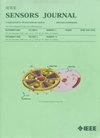Spatiotemporal Estimation and Analysis of PM2.5 Concentrations in Wuhan Utilizing Multisource Remote Sensing Data and NOx as Inputs for Machine Learning Models
IF 4.3
2区 综合性期刊
Q1 ENGINEERING, ELECTRICAL & ELECTRONIC
引用次数: 0
Abstract
Atmospheric fine particulate matter (PM2.5) poses significant risks to both environmental and human health, highlighting the need for regional estimations and spatiotemporal analyses. While most studies have focused on large-scale areas, such as global or national levels, fewer studies addressed PM2.5 at the urban level. This study analyzed PM2.5 monitoring data from ground stations in Wuhan, collected between July 2018 and July 2023, integrating 1 km aerosol optical depth (AOD) products, Sentinel-5 NO2 column concentration data, nighttime light remote sensing, and ERA5 reanalysis meteorological data. Key innovations included selecting NO2 column concentration data, as NOx primarily exists as NO2, and using novel Sentinel-5P measurements rarely explored in related research. Three PM2.5 estimation models were developed: multiple linear regression (MLR), extreme gradient boosting (XGBoost), and random forest (RF). Evaluation results showed that all models achieved Pearson’s correlation coefficients (r) above 0.8, with the segmented RF-XGBoost model performing best, reaching an average relative error of 10.38%. Using this optimal model, monthly spatiotemporal maps of PM2.5 concentrations in Wuhan were generated. Key findings include 1) seasonal PM2.5 levels in Wuhan were lower in summer and higher in winter; 2) significant regional disparities in PM2.5 levels were observed, with persistently high pollution in areas such as Qing Shan; and 3) significant changes in PM2.5 levels before and after the COVID-19 pandemic, characterized by an overall decrease in concentrations from 2019 to 2020, followed by gradual increases in certain districts post-lockdown. This study provides valuable insights for urban-level PM2.5 estimation, supporting effective pollution control strategies.求助全文
约1分钟内获得全文
求助全文
来源期刊

IEEE Sensors Journal
工程技术-工程:电子与电气
CiteScore
7.70
自引率
14.00%
发文量
2058
审稿时长
5.2 months
期刊介绍:
The fields of interest of the IEEE Sensors Journal are the theory, design , fabrication, manufacturing and applications of devices for sensing and transducing physical, chemical and biological phenomena, with emphasis on the electronics and physics aspect of sensors and integrated sensors-actuators. IEEE Sensors Journal deals with the following:
-Sensor Phenomenology, Modelling, and Evaluation
-Sensor Materials, Processing, and Fabrication
-Chemical and Gas Sensors
-Microfluidics and Biosensors
-Optical Sensors
-Physical Sensors: Temperature, Mechanical, Magnetic, and others
-Acoustic and Ultrasonic Sensors
-Sensor Packaging
-Sensor Networks
-Sensor Applications
-Sensor Systems: Signals, Processing, and Interfaces
-Actuators and Sensor Power Systems
-Sensor Signal Processing for high precision and stability (amplification, filtering, linearization, modulation/demodulation) and under harsh conditions (EMC, radiation, humidity, temperature); energy consumption/harvesting
-Sensor Data Processing (soft computing with sensor data, e.g., pattern recognition, machine learning, evolutionary computation; sensor data fusion, processing of wave e.g., electromagnetic and acoustic; and non-wave, e.g., chemical, gravity, particle, thermal, radiative and non-radiative sensor data, detection, estimation and classification based on sensor data)
-Sensors in Industrial Practice
 求助内容:
求助内容: 应助结果提醒方式:
应助结果提醒方式:


